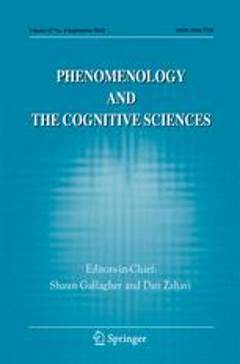Repository | Zeitschrift | Band | Artikel
Beliefs, experiences and misplaced being
an interactionist account of delusional misidentification
pp. 195-215
Abstrakt
This paper contrasts an interactionist account of delusional misidentification with more traditional one- and two-stage models. Unlike the unidirectional nature of these more traditional models, in which the aetiology of the disorder is said to "progress" from a neurological disruption via an anomalous experience to a delusional belief, the interactionist account posits the interaction of top-down and bottom-up processes to better explain the maintenance of the delusional belief. In addition, it places a greater emphasis on the patient's underlying phenomenal experience in accounting for the specificity of the delusional content. The role played by patient phenomenology is examined in light of Ratcliffe's recent phenomenological account. Similarities and differences are discussed. The paper concludes that a purely phenomenological account is unable to differentiate between non-delusional patient groups, who have what appear to be equivalent phenomenal experiences to patients suffering from delusional misidentification but without the delusional belief, and delusional groups, something the interactionist model is able to do.
Publication details
Published in:
(2011) Phenomenology and the Cognitive Sciences 10 (2).
Seiten: 195-215
DOI: 10.1007/s11097-010-9168-9
Referenz:
Young Garry (2011) „Beliefs, experiences and misplaced being: an interactionist account of delusional misidentification“. Phenomenology and the Cognitive Sciences 10 (2), 195–215.



